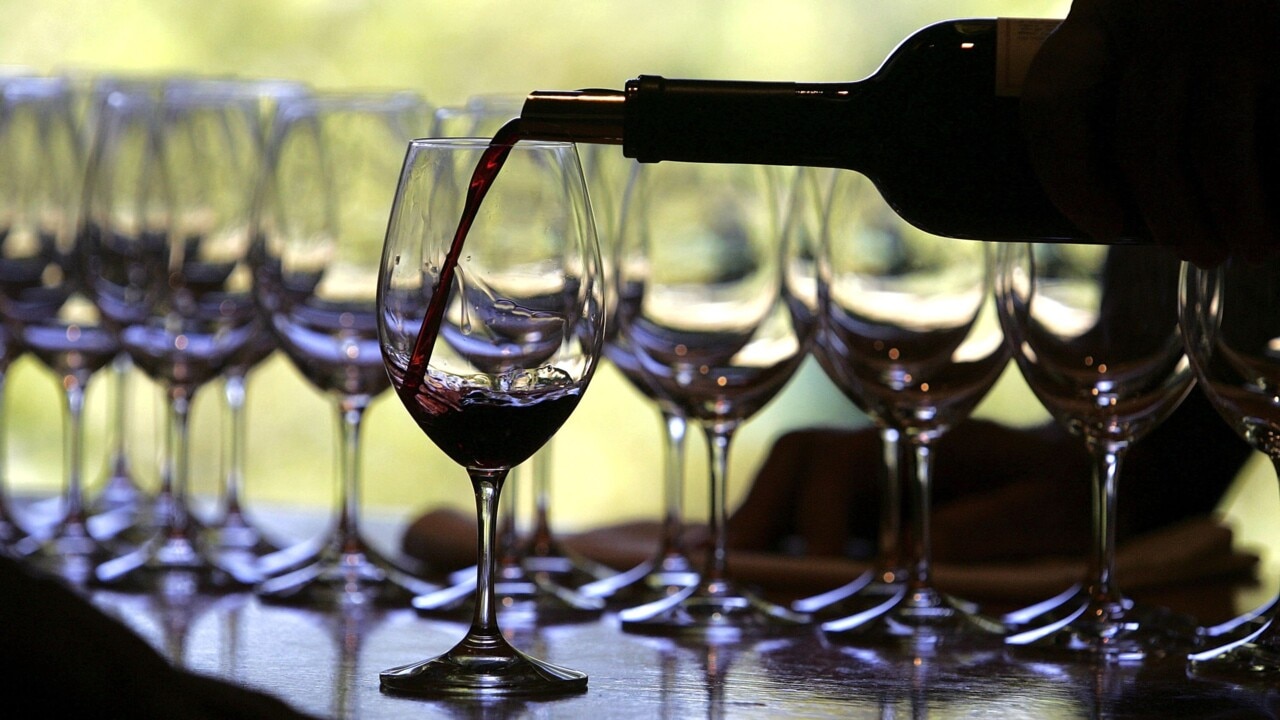Winemakers warn of slow recovery in China after removal of tariffs
Figures suggest the Chinese wine market is back with a bang for Australian exporters, but local winemakers say it’s a very different story on the ground.

The figures would suggest the Chinese wine market is back with a bang for Australian exporters, but local winemakers say the resumption of tariff-free trade has been a slow burn.
Australia’s biggest trading partner is grappling with an economic slowdown and a cost of living crisis that is crimping demand for luxury products and premium wine.
Almost six months after Chinese authorities ditched their damaging three-year tariffs on Australian wine, sales are tracking higher than before the trade dispute, which caused many producers to explore new global markets amid a glut of mainly red wine.
According to the latest figures from Wine Australia, more than $389m worth of Australian wine was sold into China from April to June – after tariffs were removed at the end of March.
At that rate, annual sales to China are on track to exceed the $1.2bn in exports previously recorded in what was once the dominant destination for Australian wines before the tariffs were introduced in March 2021.

However, Chester Osborn, chief executive and chief winemaker at McLaren Vale’s d’Arenberg, said the figures masked the challenging economic environment facing producers looking to dip back into the Chinese market.
“The wine that was being sold in those first few months – they were good sales, but no one believes that’s actually happening and that it will keep going that way. It’s tough over there,” he said.
“We’re aggressively going in there right now, even with the poor state of the place.
“We have been getting orders, but they’re definitely not like it was just before the tariffs came in. It’s much slower over there. The whole market is depressed economically, a lot more than what people probably hear about, and the effect of that with wine is wine consumption is somewhere in the vicinity of 40 per cent of what it was pre-Covid, pre-tariffs in China. And of course high-end wines are suffering.
“When you’re there on the ground, everyone says it’s the economic problems that people are having which is causing the problem. This is an economic crisis that they have over there.”
The tariffs were financially crushing for d’Arenberg, which previously generated 20 per cent of its revenue in China. D’Arenberg’s sales are back up to about a quarter of their pre-tariff levels.
Mr Osborn said another challenge was the aggressive re-entry of Treasury Wine Estates, which had flooded the market with its flagship Penfolds range.
Meanwhile at Maxwell Wines, owner Mark Maxwell is taking a more cautious approach to its re-entry into the Chinese market, where it previously generated close to 15 per cent of its total sales.

Mr Maxwell said the Chinese wine market had evolved during the three-year hiatus, and coupled with the challenging economic environment, it meant the recovery would be a slow one.
“While we were out of the market, a couple of things happened. One was South Africa and Chile took greater shares of the market, so we’ve got another competitor with extra countries supplying,” he said.
“The second unusual thing was that we had always thought the Chinese were just red wine drinkers. In the last three years, they’ve started drinking white wine as well, so that’s been a benefit for New Zealand. That’s yet another thing we have to work with and learn how to manage.”
As part of the federal government’s efforts to re-engage with Chinese importers and consumers, Wine Australia recently led a trade mission to five Chinese cities with a group of local wine companies.
Wine Australia general manager of market development Paul Turale said that while the early signs were positive for the luxury and affordable segments, the “middle part of the market” was likely to take more time to entrench itself into the minds of Chinese consumers.
“I think that middle part of the market is going to be a slower burn. I think we’re likely to see that take some time to really rebound back to anywhere near it was before,” he said.
“That’s where we were seeing some pretty significant gains pre-tariff. A lot of that was that emerging Chinese middle class, which economically has probably been knocked around a little bit over the last few years, and a lot of the consumption also happened on premise in China.
“So the fact that there really wasn’t an on premise for a few years (due to Covid) – we’ve got to now do the heavy lifting and really getting them to re-engage with wine as a category, and something that works for the occasions and works with their food.”
Mr Turale said that while China would again emerge as a major market for Australian wine, it was important for producers to continue to diversify into new export markets, including in Southeast Asia, where Wine Australia will lead a group of Australian wineries on a regional roadshow to Thailand, The Philippines, Indonesia and Vietnam in October.
However, Mr Osborn believes the US is where the greatest opportunity lies, and is calling for more funding to help market Australian wine to what was once its biggest export destination.
He wants the federal government to chip in $150m to subsidise marketing and travel to enable Australian wineries to effectively promote their products in the US.
“The biggest wine market in the world is America, and America is the market that we should be concentrating a lot on,” he said.
“It’s by far the most affluent region for wine, and our wine competes extremely well in America. In 2007 Australia was selling $1bn worth of wine to USA, and now it’s about $300m.
“We’d all love to be selling more over there, and they’re all very receptive over there, but the talk in America is where are the Australians?”
Maxwell Wines made a return to the US market last November when it signed a distribution agreement with US importer and distributor Southern Glazer’s Wine & Spirits, with plans to roll out its premium wine across five US states.
Mr Maxwell believes a renaissance for Australian wine in the US could emerge, but it would be a “slow burn” as the industry attempts to shrug off perceptions of Australian labels being predominantly cheap, mass-produced “critter” wine.
“Education is always the key. We know that we make as good a quality wine as most countries in the world, and we’ve just got to try and get that message into to the people’s minds in America.”
Originally published as Winemakers warn of slow recovery in China after removal of tariffs





